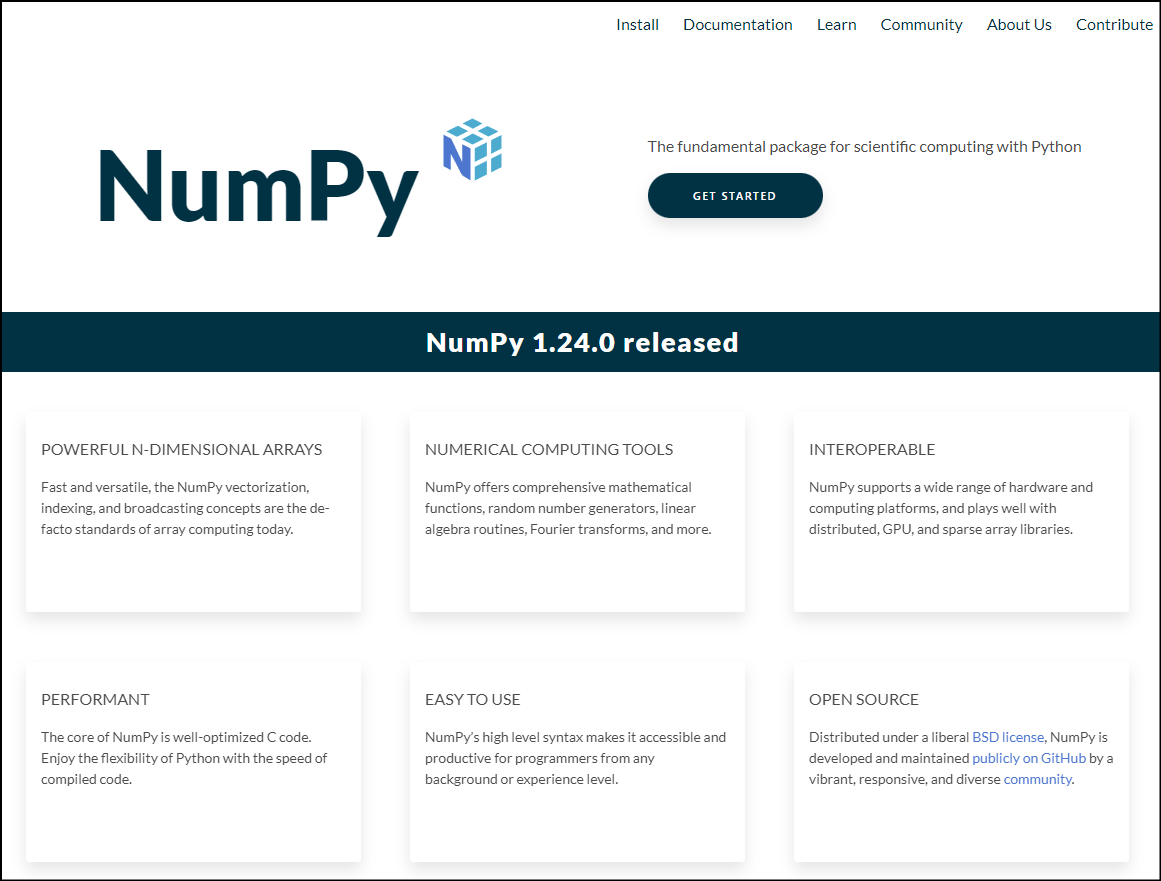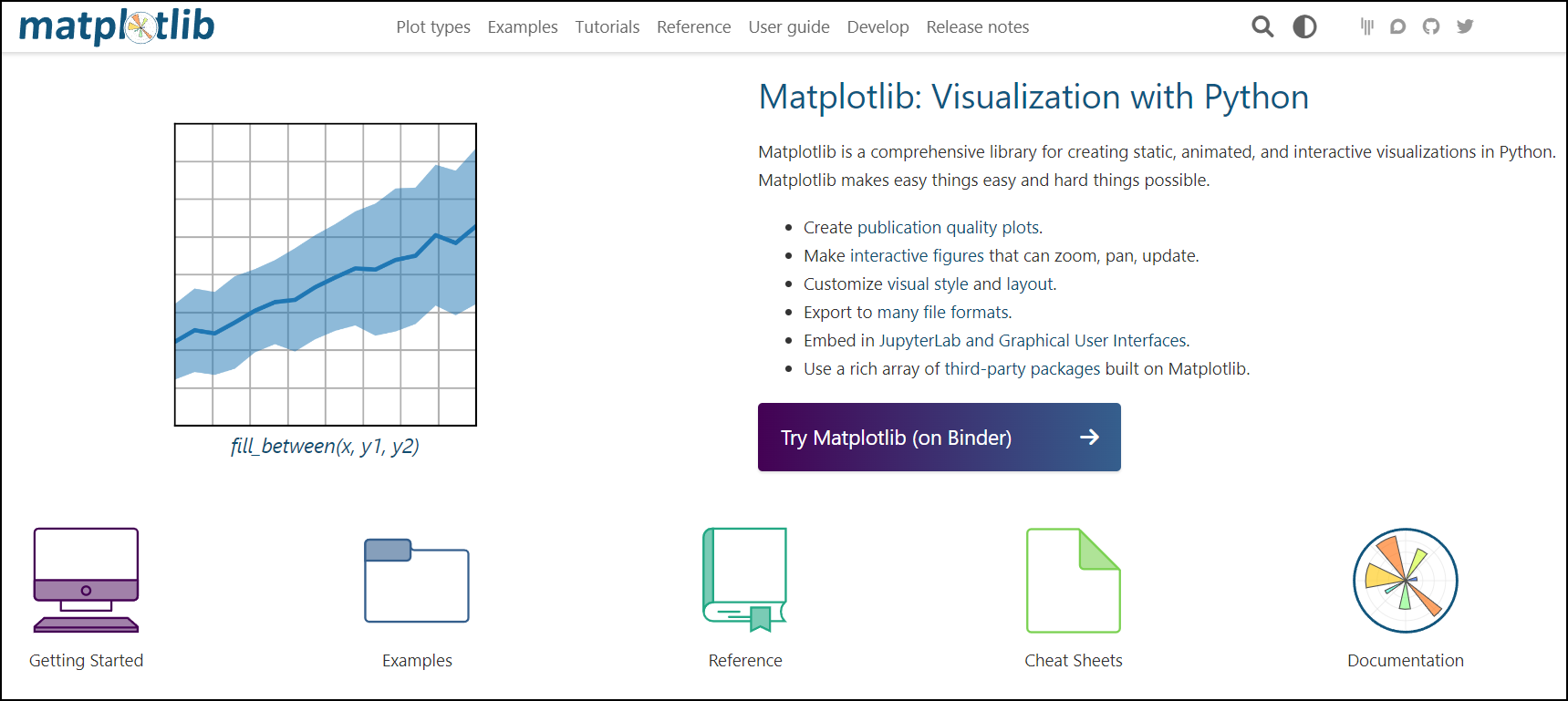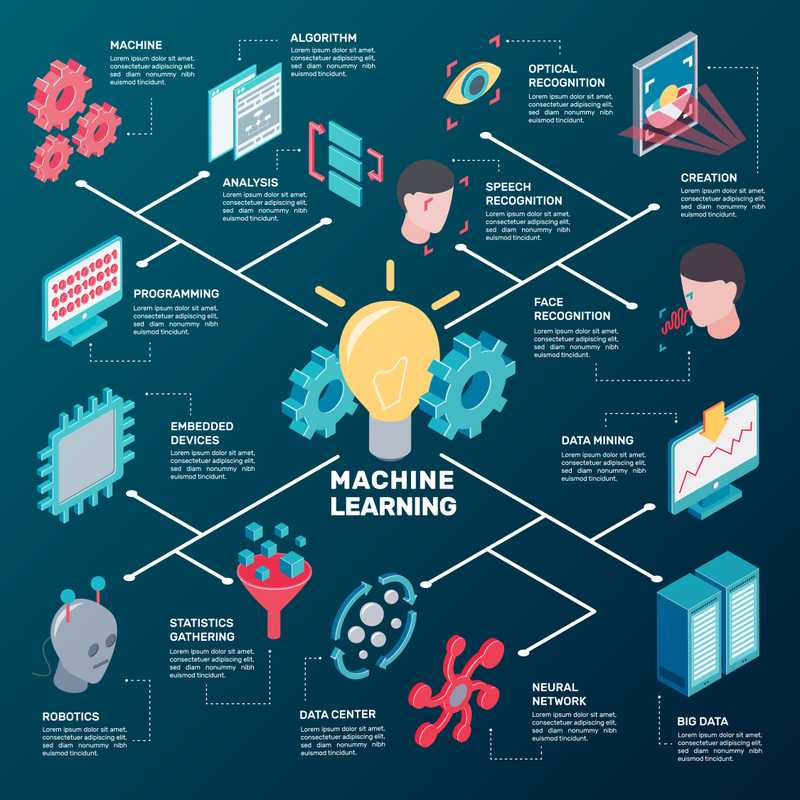Collections of prewritten code, more commonly known as programming libraries, are indispensable tools for virtually all programmers. But for data scientists working with Python, the value of libraries is on another level. Whether you’re doing data transformation, analysis, machine learning, or visualization, these libraries are essential.
Of course, with so many out there, it can be a little overwhelming to choose the right one. That’s why we’ve put together this guide. Below, we’ll tell you all about the 8 best python libraries for data science, and what makes them so great.
What Is a Python Library?
Python libraries are collections of modules that programmers can use to perform tasks while writing fewer lines of code. Python is famous for having a massive amount of libraries, totaling over 137,000, which are used extensively in many fields. Most of the most popular Python libraries, however, are tied to the field of data science.
8 Popular Python Libraries for Data Science
Here are the 8 best Python libraries for data science.
NumPy

NumPy (Numerical Python) is an open-source package that allows numerical computing in Python, including mathematical functions, random number generators, and linear algebra routines. The library itself is written with C code, which runs much faster than Python. This allows users to access the speed of compiled code, while still getting to use the simple and user-friendly Python syntax.
Libraries often build off other libraries, and the computational power NumPy provides is at the core of many other Python data science libraries, including pandas, scikit-learn, and SciPy. It’s also an essential component in visualization libraries like Matplotlib and seaborn and allows users to visualize bigger datasets than Python could handle alone.
Highlights
Some of the many tasks NumPy can achieve include:
- Statistical computing
- Signal processing
- Mathematical analysis
- Image processing
- Graphs and networks
- Bayesian inference
- Multidimensional arrays
pandas

pandas is an open-source and NumFOCUS-sponsored project that began in 2008. It aims to provide programmers with the building blocks needed to complete practical, real-world data analysis in Python. Like NumPy, pandas is written with C code, so users can experience powerful and fast results while writing flexible Python code.
The pandas library is generally used to extract, transform, and load data at the beginning of the data science process. It possesses tools for reading and writing data between various structures and formats such as text files, Excel files, and SQL databases.
If you’re interested in learning more about pandas, then you should definitely check out Springboard’s Data Science Bootcamp, which teaches students how to pandas to wrangle and clean data as part of its 500+ hour curriculum.
Highlights
- Hierarchical axis indexing
- Merging and joining of data sets
- Aggregating and transforming data
- Label-based slicing, fancy indexing, and subsetting
- Intelligent data alignment
- Flexible data structures
- Fast and efficient DataFrame
Matplotlib

Matplotlib is a library for creating data visualizations in Python. It can generate static, animated, and interactive plots of high quality. The library has a high-level interface to increase accessibility for users of all levels and abilities. A wide range of different plot types are available, including but not limited to:
- Scatter plots
- Bar charts
- Pie charts
- Box plots
- Error charts
- Stem plots
- Contour plots
- Joint plots
- Stackplots
- Streamplots
Visualization libraries are used at the end of the data science process to present the data and derived insights in a clear and digestible format. These plots, graphs, and two-dimensional diagrams are shown to decision-makers during a data scientist’s presentation to help viewers understand the data and make decisions based on it. Matplotlib can also embed plots into applications on desktops and mobile devices using an object-oriented API.
Highlights
- Create high-quality plots
- Make Interactive figures that can zoom, pan, and update
- Utilize lots of third-party packages
- Customize visual style and layout
- Create computational graphs
- Export to many different file formats
SciPy

SciPy (Scientific Python) is a sister project of NumPy that focuses on scientific computing with Python. It builds on NumPy, providing additional manipulation tools for solving mathematical, scientific, engineering, and technical problems. It also works with array computing, algorithms, and high-level data structures such as sparse matrices and k-dimensional trees.
The library is written with multiple low-level programming languages like Fortran, C, and C++ to combine the speed of compiled code with the flexibility of Python, just like NumPy. With high-level syntax, SciPy is accessible and usable for programmers of many different levels and backgrounds.
Highlights
SciPy includes algorithms for a variety of uses such as:
- Optimization
- Integration
- Interpolation
- High-level commands
- Eigenvalue problems
- Advanced array operations
- Algebraic equations
- Differential equations
- Statistics
Seaborn

Built on top of Matplotlib and drawing on pandas data structures, the Seaborn plotting library is used for generating informative statistical graphics in Python. It focuses on simplifying complex visualizations and adding extra aesthetic customizations for even more professional-looking plots.
Seaborn comes with a number of examples that dataset programmers can use to start learning how to visualize data, so it’s easy for newcomers to get to know the library.
Highlights
Like Matplotlib, Seaborn makes a variety of different plot types available to its users, including:
- Scatter plots
- Histogram plots
- Bar charts
- Box plots
- Violin diagrams
- Error charts
- Facet grids with distplot
- Pair plots
- Bubble charts
- Pie charts
- Cluster maps
- Heatmaps
PyTorch

PyTorch is an open-source machine learning framework and deep learning library used by big names such as Amazon, Salesforce, and Stanford University. The project is part of the Linux Foundation and enables fast and flexible production of machine learning models.
The library can be used either with the default Python frontend or a C++ frontend that allows the users to interact with the library by writing C++ code.
Highlights
- Easy-to-use TorchScript
- TorchServe for easy deployment
- Distributed training
- Experimental mobile feature
- Tensor computations with GPU acceleration
- Robust ecosystem and active community
- Native ONNX support
- C++ frontend
- Natural language processing
- Cloud support
TensorFlow

TensorFlow is a popular open-source library for machine learning that helps users create production-grade deep learning models more quickly and easily. The library provides tutorials, examples, and various other resources to speed up build times and create scalable deep-learning models. Users can search for pre-trained models or build and train their own based on what they need.
Users can join the active community by contributing to forums and user groups, attending machine learning tech talks, joining a special interest group, or becoming a contributor. There’s also a collection of add-on libraries and models for users to draw on, including Regged Tensors, TensorFlow Probability, Tensor2Tensor, and BERT.
Highlights
- Easy model building
- Robust ML production
- Powerful Experimentation
- Statistical models
- Pre-trained models
- ML solutions for every skill level
- Implement MLOps
scikit-learn

scikit-learn is another machine-learning library that provides simple and efficient tools for predictive data analysis. Unlike a lot of the libraries listed, the fundamental package is largely written in Python and it’s built on NumPy, SciPy, and Matplotlib.
It was originally started as a Google Summer of Code project in 2007, with its first public release in 2010. It’s completely open source and funded by both its community and external organizations like Microsoft.
The library focuses on modeling data, using a number of features such as supervised learning algorithms, unsupervised learning algorithms, cross-validation, and ensemble methods.
Highlights
- Classification using Python
- Regression, used for datasets like stock prices
- Clustering for customer segmentation and grouping experiment outcomes
- Dimensionality reduction for visualization and increased efficiency
- Model selection for improved accuracy
- Preprocessing for transforming input data
Get To Know Other Data Science Students
Leoman Momoh
Senior Data Engineer at Enterprise Products
Peter Liu
Business Intelligence Analyst at Indeed
Bryan Dickinson
Senior Marketing Analyst at REI
Popular Python Libraries for Different Applications
There are multiple stages in the data science process, and different libraries are used to help with each stage. Usually, the process looks something like this:
- Extract, transform, load (ETL)
- Data exploration
- Data evaluation
- Data modeling
- Data presentation (or visualization)
What Are the Top Python Libraries for Data Visualization?

Matplotlib is usually seen as the top library for data visualization, and many libraries catering to more specific uses are built on top of Matplotlib. Other popular visualization libraries and low-code libraries include:
What Are the Top Python Libraries for Big Data?

Working with particularly large datasets often requires specific libraries that can deal with the high volumes. Dask and Ray are two popular libraries that specialize in scaling complex workloads for big data. Other options include:
- TensorFlow
- pandas
- NumPy
- SciPy
What Are the Top Python Libraries for Data Engineering?

A data engineering project will likely use a range of libraries for different stages of the process. Here are some popular libraries often used for data engineering:
- Pandas
- Dask
- Tensorflow
- PyTorch
FAQs About Python Libraries for Data Science
Here are some frequently asked questions about Python libraries for data science.
What Should I Learn First: Pandas or NumPy?
Learning the basics of NumPy is a great place to start because the majority of other data science Python libraries use NumPy for their numerical computing. By understanding this foundation, you’ll also be able to understand more about what’s going on in the subsequent libraries you learn.
What Are the Best Python Libraries for Beginners?
Any of the most popular Python libraries—such as pandas, NumPy, SciPy, Matplotlib, PyTorch, and scikit-learn—are perfect for beginners, as they all focus on accessibility and ease of use. Each project aims to provide features for every level of programmer, to help them grow and be productive.
How Fast Can I Learn Python for Data Science?
Python has a high-level, simple syntax that is great for new learners and anyone new to programming. This means you can begin learning and start writing programs straight away, with the programs you write becoming more complex as you learn more and more. To master enough Python to take on a data science project, it would take somewhere between 6-8 months.
What Are Some Underrated Python Libraries for Data Science?
Some well-received but underrated Python libraries and packages include Emmett, Jam.py, Shogun, Blaze, and Altair. They focus on a range of data science tasks, including machine learning, dashboards, and web frameworks.
Companies are no longer just collecting data. They’re seeking to use it to outpace competitors, especially with the rise of AI and advanced analytics techniques. Between organizations and these techniques are the data scientists – the experts who crunch numbers and translate them into actionable strategies. The future, it seems, belongs to those who can decipher the story hidden within the data, making the role of data scientists more important than ever.
In this article, we’ll look at 13 careers in data science, analyzing the roles and responsibilities and how to land that specific job in the best way. Whether you’re more drawn out to the creative side or interested in the strategy planning part of data architecture, there’s a niche for you.
Is Data Science A Good Career?
Yes. Besides being a field that comes with competitive salaries, the demand for data scientists continues to increase as they have an enormous impact on their organizations. It’s an interdisciplinary field that keeps the work varied and interesting.
10 Data Science Careers To Consider
Whether you want to change careers or land your first job in the field, here are 13 of the most lucrative data science careers to consider.
Data Scientist
Data scientists represent the foundation of the data science department. At the core of their role is the ability to analyze and interpret complex digital data, such as usage statistics, sales figures, logistics, or market research – all depending on the field they operate in.
They combine their computer science, statistics, and mathematics expertise to process and model data, then interpret the outcomes to create actionable plans for companies.
General Requirements
A data scientist’s career starts with a solid mathematical foundation, whether it’s interpreting the results of an A/B test or optimizing a marketing campaign. Data scientists should have programming expertise (primarily in Python and R) and strong data manipulation skills.
Although a university degree is not always required beyond their on-the-job experience, data scientists need a bunch of data science courses and certifications that demonstrate their expertise and willingness to learn.
Average Salary
The average salary of a data scientist in the US is $156,363 per year.
Data Analyst
A data analyst explores the nitty-gritty of data to uncover patterns, trends, and insights that are not always immediately apparent. They collect, process, and perform statistical analysis on large datasets and translate numbers and data to inform business decisions.
A typical day in their life can involve using tools like Excel or SQL and more advanced reporting tools like Power BI or Tableau to create dashboards and reports or visualize data for stakeholders. With that in mind, they have a unique skill set that allows them to act as a bridge between an organization’s technical and business sides.
General Requirements
To become a data analyst, you should have basic programming skills and proficiency in several data analysis tools. A lot of data analysts turn to specialized courses or data science bootcamps to acquire these skills.
For example, Coursera offers courses like Google’s Data Analytics Professional Certificate or IBM’s Data Analyst Professional Certificate, which are well-regarded in the industry. A bachelor’s degree in fields like computer science, statistics, or economics is standard, but many data analysts also come from diverse backgrounds like business, finance, or even social sciences.
Average Salary
The average base salary of a data analyst is $76,892 per year.
Business Analyst
Business analysts often have an essential role in an organization, driving change and improvement. That’s because their main role is to understand business challenges and needs and translate them into solutions through data analysis, process improvement, or resource allocation.
A typical day as a business analyst involves conducting market analysis, assessing business processes, or developing strategies to address areas of improvement. They use a variety of tools and methodologies, like SWOT analysis, to evaluate business models and their integration with technology.
General Requirements
Business analysts often have related degrees, such as BAs in Business Administration, Computer Science, or IT. Some roles might require or favor a master’s degree, especially in more complex industries or corporate environments.
Employers also value a business analyst’s knowledge of project management principles like Agile or Scrum and the ability to think critically and make well-informed decisions.
Average Salary
A business analyst can earn an average of $84,435 per year.
Database Administrator
The role of a database administrator is multifaceted. Their responsibilities include managing an organization’s database servers and application tools.
A DBA manages, backs up, and secures the data, making sure the database is available to all the necessary users and is performing correctly. They are also responsible for setting up user accounts and regulating access to the database. DBAs need to stay updated with the latest trends in database management and seek ways to improve database performance and capacity. As such, they collaborate closely with IT and database programmers.
General Requirements
Becoming a database administrator typically requires a solid educational foundation, such as a BA degree in data science-related fields. Nonetheless, it’s not all about the degree because real-world skills matter a lot. Aspiring database administrators should learn database languages, with SQL being the key player. They should also get their hands dirty with popular database systems like Oracle and Microsoft SQL Server.
Average Salary
Database administrators earn an average salary of $77,391 annually.
Data Engineer
Successful data engineers construct and maintain the infrastructure that allows the data to flow seamlessly. Besides understanding data ecosystems on the day-to-day, they build and oversee the pipelines that gather data from various sources so as to make data more accessible for those who need to analyze it (e.g., data analysts).
General Requirements
Data engineering is a role that demands not just technical expertise in tools like SQL, Python, and Hadoop but also a creative problem-solving approach to tackle the complex challenges of managing massive amounts of data efficiently.
Usually, employers look for credentials like university degrees or advanced data science courses and bootcamps.
Average Salary
Data engineers earn a whooping average salary of $125,180 per year.
Database Architect
A database architect’s main responsibility involves designing the entire blueprint of a data management system, much like an architect who sketches the plan for a building. They lay down the groundwork for an efficient and scalable data infrastructure.
Their day-to-day work is a fascinating mix of big-picture thinking and intricate detail management. They decide how to store, consume, integrate, and manage data by different business systems.
General Requirements
If you’re aiming to excel as a database architect but don’t necessarily want to pursue a degree, you could start honing your technical skills. Become proficient in database systems like MySQL or Oracle, and learn data modeling tools like ERwin. Don’t forget programming languages – SQL, Python, or Java.
If you want to take it one step further, pursue a credential like the Certified Data Management Professional (CDMP) or the Data Science Bootcamp by Springboard.
Average Salary
Data architecture is a very lucrative career. A database architect can earn an average of $165,383 per year.
Machine Learning Engineer
A machine learning engineer experiments with various machine learning models and algorithms, fine-tuning them for specific tasks like image recognition, natural language processing, or predictive analytics. Machine learning engineers also collaborate closely with data scientists and analysts to understand the requirements and limitations of data and translate these insights into solutions.
General Requirements
As a rule of thumb, machine learning engineers must be proficient in programming languages like Python or Java, and be familiar with machine learning frameworks like TensorFlow or PyTorch. To successfully pursue this career, you can either choose to undergo a degree or enroll in courses and follow a self-study approach.
Average Salary
Depending heavily on the company’s size, machine learning engineers can earn between $125K and $187K per year, one of the highest-paying AI careers.
Quantitative Analyst
Qualitative analysts are essential for financial institutions, where they apply mathematical and statistical methods to analyze financial markets and assess risks. They are the brains behind complex models that predict market trends, evaluate investment strategies, and assist in making informed financial decisions.
They often deal with derivatives pricing, algorithmic trading, and risk management strategies, requiring a deep understanding of both finance and mathematics.
General Requirements
This data science role demands strong analytical skills, proficiency in mathematics and statistics, and a good grasp of financial theory. It always helps if you come from a finance-related background.
Average Salary
A quantitative analyst earns an average of $173,307 per year.
Data Mining Specialist
A data mining specialist uses their statistics and machine learning expertise to reveal patterns and insights that can solve problems. They swift through huge amounts of data, applying algorithms and data mining techniques to identify correlations and anomalies. In addition to these, data mining specialists are also essential for organizations to predict future trends and behaviors.
General Requirements
If you want to land a career in data mining, you should possess a degree or have a solid background in computer science, statistics, or a related field.
Average Salary
Data mining specialists earn $109,023 per year.
Data Visualisation Engineer
Data visualisation engineers specialize in transforming data into visually appealing graphical representations, much like a data storyteller. A big part of their day involves working with data analysts and business teams to understand the data’s context.
General Requirements
Data visualization engineers need a strong foundation in data analysis and be proficient in programming languages often used in data visualization, such as JavaScript, Python, or R. A valuable addition to their already-existing experience is a bit of expertise in design principles to allow them to create visualizations.
Average Salary
The average annual pay of a data visualization engineer is $103,031.
Resources To Find Data Science Jobs
The key to finding a good data science job is knowing where to look without procrastinating. To make sure you leverage the right platforms, read on.
Job Boards
When hunting for data science jobs, both niche job boards and general ones can be treasure troves of opportunity.
Niche boards are created specifically for data science and related fields, offering listings that cut through the noise of broader job markets. Meanwhile, general job boards can have hidden gems and opportunities.
Online Communities
Spend time on platforms like Slack, Discord, GitHub, or IndieHackers, as they are a space to share knowledge, collaborate on projects, and find job openings posted by community members.
Network And LinkedIn
Don’t forget about socials like LinkedIn or Twitter. The LinkedIn Jobs section, in particular, is a useful resource, offering a wide range of opportunities and the ability to directly reach out to hiring managers or apply for positions. Just make sure not to apply through the “Easy Apply” options, as you’ll be competing with thousands of applicants who bring nothing unique to the table.
FAQs about Data Science Careers
We answer your most frequently asked questions.
Do I Need A Degree For Data Science?
A degree is not a set-in-stone requirement to become a data scientist. It’s true many data scientists hold a BA’s or MA’s degree, but these just provide foundational knowledge. It’s up to you to pursue further education through courses or bootcamps or work on projects that enhance your expertise. What matters most is your ability to demonstrate proficiency in data science concepts and tools.
Does Data Science Need Coding?
Yes. Coding is essential for data manipulation and analysis, especially knowledge of programming languages like Python and R.
Is Data Science A Lot Of Math?
It depends on the career you want to pursue. Data science involves quite a lot of math, particularly in areas like statistics, probability, and linear algebra.
What Skills Do You Need To Land an Entry-Level Data Science Position?
To land an entry-level job in data science, you should be proficient in several areas. As mentioned above, knowledge of programming languages is essential, and you should also have a good understanding of statistical analysis and machine learning. Soft skills are equally valuable, so make sure you’re acing problem-solving, critical thinking, and effective communication.
Since you’re here…Are you interested in this career track? Investigate with our free guide to what a data professional actually does. When you’re ready to build a CV that will make hiring managers melt, join our Data Science Bootcamp which will help you land a job or your tuition back!






